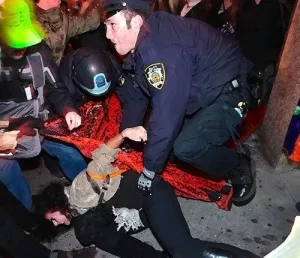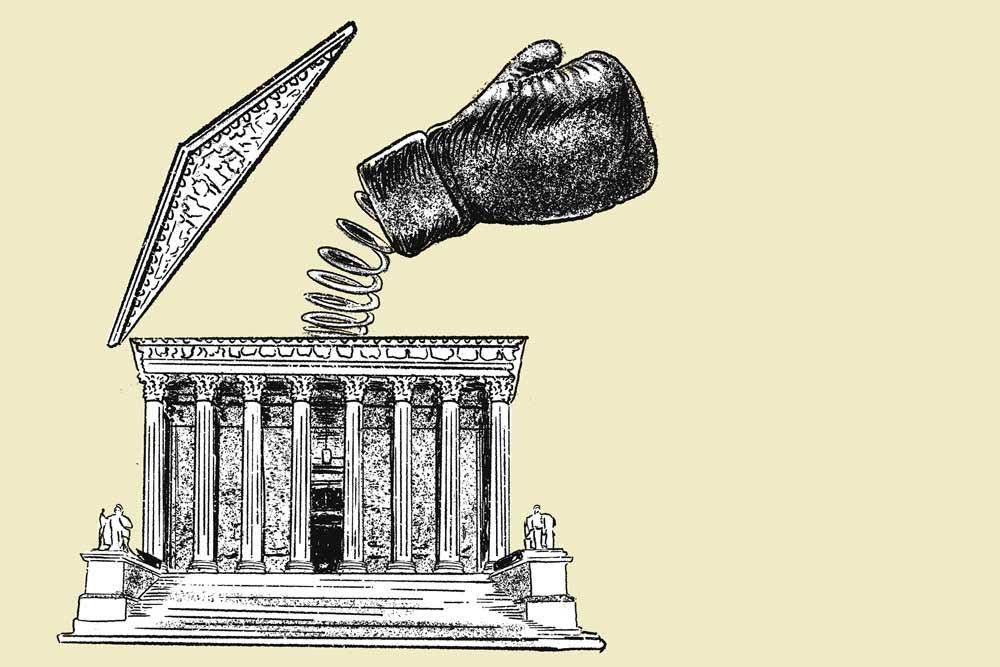How to Bring a Civil Rights Claim
A Section 1983 lawsuit is a legal claim alleging that a state or local official has violated your civil rights under the United States Constitution. These actions may be brought in state or federal court. Victims can pursue
- monetary damages or
- an injunction to stop the improper conduct.
The injunction can prevent the violation from happening again. The damages can compensate the victim and punish the wrongdoer. However, victims have to Overcoming Qualified Immunity in Civil Rights Claims defense in order to recover monetary damages. Note, though, that recent law bars the use of this defense in some cases. How Far Does Qualified Immunity Go for Government?
1. What is a Section 1983 lawsuit?
A Section 1983 lawsuit is a civil rights lawsuit. It can be filed by someone whose civil rights have been violated. The victim can file a lawsuit if the wrongdoer was acting under color of law.1
Civil rights are those guaranteed by the U.S. Constitution or certain federal laws.1 The Supreme Court recognizes that there is a deprivation of rights when:
- police misconduct such as excessive force and unreasonable use of force (like the use of a taser during an arrest),2
- police officers wantonly search a victim’s home and kill their dogs,3
- a judge sexually assaults women while in the course of his/her job,4
- state officials strip welfare recipients of their benefits,5
- jail guards put an ex-gang member in a prison cell with current gang members, even after being told of the danger.6
Rights guaranteed by state law cannot be the basis of a Section 1983 lawsuit. Only federal rights are protected by the statute.7
Technically, Section 1983 is nothing more than a procedural device based on a federal statute. It gives federal courts jurisdiction to hear civil rights cases. No one can be liable under Section 1983. Instead, it creates liability for violating other federal laws. That is why 1983 cases always include an alleged violation of another law, such as the:
- First Amendment,
- Fourth Amendment (for example, arrests without probable cause, unreasonable searches),8
- Eighth Amendment,9
- Fourteenth Amendment (for example, lack of due process, equal protection), or
- Social Security Act.10

At common law, prior to Section 1983, lawsuits against the state and its agents were barred by sovereign immunity. Section 1983 was originally designed to protect slaves who were freed in the Civil War. Southern states passed laws that harassed and intimidated African Americans. Law enforcement officers in the south used their positions to assault victims.
The law was passed by legislators as a part of the Civil Rights Act of 1871. This act of Congress allowed black victims to file a lawsuit and recover money damages. That lawsuit could be filed in federal court. The congressional intent was for victims to avoid state court decisions. In state court, the victim would likely have faced a strong bias.
2. What does “under color of law” mean?
The civil rights violation has to be committed “under color of law.” People act under color of any statute when they behave with the apparent authority of the state. While on the job, police department officers and jail guards act under color of state law.11
State officials can act under color of law while they break the law, too. They can violate official policy and still maintain the appearance of state action.12 So long as they have the appearance of state actors, they can be sued.
Example: Acting on their own, 13 uniformed police officers break into a house and arrest a man in front of his family. They hold him at the station for 10 hours before releasing him without charge.13
This means that off-duty police officers can be acting under the color of law. However, there have to be signs that the officer made it seem like he was on the job (acting in “an official capacity”). Factors could include:
- showing a police badge,
- claiming to be a police officer,
- brandishing a gun,
- behaving like a police officer, and
- acting like an arrest was being made.
However, working for the state does not always mean that a person acts under color of law. Some people who technically work for the state cannot act under color of law.
Example: Public defenders cannot act under color of law. Their role is to fight the state’s prosecutions.14
On the other hand, people who do not work for the government can still act under color of law. This can happen if they conspire with government officials to deprive someone of their civil rights.
Example: A businessman works with a corrupt judge to keep a competitor from drilling oil wells.15
3. Who can I sue under Section 1983?
Victims of civil rights violations can sue people who acted under the color of law. This includes:
- people who work for the government (including state government, local government, and government for the District of Columbia),
- other individuals who conspire with those government workers, and
- certain government entities.
A Section 1983 litigation claim can be filed against state and local officials such as:
- police officers,
- sheriff’s deputies,
- state or county prison guards,
- police chiefs,
- county sheriffs,
- prison wardens, and
- other public officials
However, Section 1983 does not normally reach federal officials.16 Federal officials can only be sued under Section 1983 if they act alongside state or local officials.17 When they are acting on their own, federal officials can be sued in a Bivens claim instead. (See our article on Bivens vs 1983).
Private individuals can also be sued if they conspire with state officials. This would make them act under color of law.18
When the constitutional violation was a custom or policy of the municipality, the municipality can be sued, too.19 Municipalities include:
- towns,
- villages,
- cities,
- counties, and
- any municipal program or department, like a school board or public transit service.
However, states like California or Texas cannot be sued in a Section 1983 claim.20
4. Can you bring a 1983 claim in state court?
Victims who suffered deprivation of any rights can file a Section 1983 cause of action in state lower courts (district courts).21 However, the ability to recover monetary damages is drastically reduced. The state official cannot be sued for official conduct for money damages.22
5. What damages can I obtain?
Successful Section 1983 claims can produce 2 kinds of remedies:
- compensatory damages for the civil rights violation known as monetary damages, and/or
- prospective relief, also known as injunctive relief.
The court can award monetary damages for compensation as well as punitive damages. The compensation aims to cover the victim’s:
- medical bills,
- lost wages,
- reduced earning capacity,
- pain and suffering,
- loss of liberty from the civil rights violation, and
- possibly attorney’s fees
The punitive damages aim to punish the wrongdoer for violating the victim’s rights. They cannot be recovered from a municipality, though.23
Some state officials are absolutely immune to 1983 claims for monetary damages. This absolute immunity applies to their official conduct. These people include:
- prosecutors,24
- judges,25 and
- state lawmakers.26
Section 1983 claims that demand damages are also susceptible to the qualified immunity defense. This defense allows other state officials to claim they were acting in good faith. The defense can succeed so long as they did not:
- violate the victim’s civil rights, and
- those rights were so clearly established that a reasonable officer would have known their conduct was a violation.27
However, municipalities cannot make use of the qualified immunity defense. They can be held liable even if they did not know they were violating the victim’s constitutional rights.28
Note also that recent California law, Senate Bill 2, bars police officers from raising a qualified immunity defense in California lawsuits brought under the Tom Bane Civil Rights Act. A citizen can file a Bane Act suit if any government employees interfered by threat, intimidation, or coercion with that party’s constitutional rights.
Senate Bill 2 also prohibits prison guards and their employers from using a qualified immunity defense in cases where they injured a prisoner or failed to provide him/her with medical care.
Section 1983 causes of action can also pursue prospective relief. This comes in the form of an injunction, or court order. That order changes be made to prevent another, similar violation from happening in the future.
6. Is there a statute of limitations?
There is a statute of limitations for Section 1983 claims. This means the civil action (lawsuit) must be filed within a certain time frame. However, that length of time depends on the type of constitutional violation.
Courts have to apply the statute of limitations that is most similar to the violation.29 This is often a personal injury statute of limitations, which tends to be 3 years. However, some 1983 cases can have different time constraints.
Legal References:
- See e.g., Gonzaga University v. Doe, (2002) 536 U.S. 273; see 42 USC 1983: Every person who, under color of any statute, ordinance, regulation, custom, or usage, of any State or Territory or the District of Columbia, subjects, or causes to be subjected, any citizen of the United States or other person within the jurisdiction thereof to the deprivation of any rights, privileges, or immunities secured by the Constitution and laws, shall be liable to the party injured in an action at law, suit in equity, or other proper proceeding for redress, except that in any action brought against a judicial officer for an act or omission taken in such officer’s judicial capacity, injunctive relief shall not be granted unless a declaratory decree was violated or declaratory relief was unavailable. For the purposes of this section, any Act of Congress applicable exclusively to the District of Columbia shall be considered to be a stat. of the District of Columbia.
- Bryan v. MacPherson, (9th Cir. 2010) 630 F.3d 805. See also Rivas-Villegas v. Cortesluna (2021) 142 S. Ct. 4.
- San Jose Charter of the Hell’s Angels Motorcycle Club v. City of San Jose, (9th Cir. Court of Appeals, 2005) 402 F.3d 963.
- U.S. v. Lanier, (1997) 520 U.S. 259.
- Maine v. Thiboutot, (1980) 448 U.S. 1, 100 S. Ct. 2502.
- Cortez v. County of Los Angeles, (9th Cir. 2002) 294 F.3d 1186.
- Maine v. Thiboutot, Supra. In addition, see Estate of Fritz ex rel. Fritz v. Hennigar, (8th Cir., 2021) 2021 U.S. App. LEXIS 36124; Garrett v. Murphy, (3d Cir., 2021) U.S. App. LEXIS 32385. Savarese v. City of New York, (S.D.N.Y., 2021) U.S. Dist. LEXIS 124390. Gray v. White, (5th Cir., 2021) U.S. App. LEXIS 34119.
- Bryan v. MacPherson, Supra.
- Cortez v. County of Los Angeles, Supra.
- Maine v. Thiboutot, Supra.
- Screws v. United States, (1945) 325 U.S. 91; West v. Atkins, (1988) 487 U.S. 42, 49.
- Home Telephone & Telegraph Co. v. Los Angeles, (1913) 227 U.S. 278.
- See Monroe v. Pape, (1961) 365 U.S. 167.
- Polk County v. Dodson, (1981) 454 U.S. 312.
- Dennis v. Sparks, (1980) 449 U.S. 24.
- Wheeldin v. Wheeler, (1963) 373 U.S. 647.
- Tongol v. Usery, (9th Cir. 1979) 601 F.2d 1091.
- Dennis v. Sparks, Supra; Bivens claims (a.k.a. Bivens action) under Bivens v. Six Unknown Named Agents of Federal Bureau of Narcotics, (1971) 403 U.S. 388; see also Roberts v. City of Fairbanks, (9th Cir. 2020) 947 F.3d 1191.
- Monell v. Department of Social Services of the City of New York, (1978) 436 U.S. 658 (re. municipal liability.)
- The Eleventh Amendment prevents states from being sued in federal court. Will v. Michigan Dep’t of State Police 491 U.S. 58 (1989) decided that states are not considered a “person” that can be sued under Section 1983, blocking lawsuits in state court.
- Maine v. Thiboutot, Supra.
- Will v. Michigan Department of State Police, Supra.
- City of Newport v. Fact Concerts, (1981) 453 U.S. 247.
- Imbler v. Pachtman, (U.S. Supreme Court, 1976) 424 U.S. 409; 42 U.S. Code § 1983 (“In any action brought against a judicial officer for an act or omission taken in such officer’s judicial capacity, injunctive relief shall not be granted unless a declaratory decree was violated or declaratory relief was unavailable.”).
- Stump v. Sparkman, (1978) 435 U.S. 349.
- Tenney v. Brandhove, (1951) 341 U.S. 367.
- Harlow v. Fitzgerald, (1982) 457 U.S. 800.
- Owen v. City of Independence, (1980) 445 U.S. 622.
- Owens v. Okure, (1989) 488 U.S. 235.
- Bivens v. Six Unknown Named Agents of the Federal Bureau of Narcotics
- Thompson v. Clark, 364 F. Supp. 3d 178
- Spencer v. Peters – Police Fabrication of Evidence
- Hemphill v. New York – 6th Amendment
- Sullivan v. County of Los Angeles – 12 Cal.3d 710
- Silva vs Langford 2022 – No 821.6 Immunity FAIL
Tort Claims File Government Claim for Eligible Compensation
Complete and submit the Government Claim Form, including the required $25 filing fee or Fee Waiver Request, and supporting documents, to the GCP.
See Information Guides and Resources below for more information.
Tort Claims – Claim for Damage, Injury, or Death
Federal – Federal SF-95 Tort Claim Form Tort Claim online here or download it here or here from us
California – California Tort Claims Act – California Tort Claim Form Here or here from us
Helpful articles involving Torts
How to File a complaint of Police or Government Misconduct?
$uing for Misconduct – Know More of Your Right$
Police Misconduct in California – How to Bring a Lawsuit
Section 1983 Lawsuit How to Bring a Civil Rights Claim
Offsite Help
- Civil Rights
- File Government Claim for Eligible Compensation site
- Claims Against the Government (Pamphlet)
- claim-damage-injury-or-death
You may need assistance obtaining police reports, incident reports, bodycam footage etc..
Retrieving Police Data, their police line recordings, and bodycam Footage SB1421 form & learn here
To Learn More…. Read MORE Below and click the links
Learn More About True Threats Here below….
We also have the The Brandenburg v. Ohio (1969) – 1st Amendment
CURRENT TEST = We also have the The ‘Brandenburg test’ for incitement to violence – 1st Amendment
We also have the The Incitement to Imminent Lawless Action Test– 1st Amendment
We also have the True Threats – Virginia v. Black is most comprehensive Supreme Court definition – 1st Amendment
We also have the Watts v. United States – True Threat Test – 1st Amendment
We also have theClear and Present Danger Test – 1st Amendment
We also have theGravity of the Evil Test – 1st Amendment
We also have the Elonis v. United States (2015) – Threats – 1st Amendment
Learn More About What is Obscene….
We also have the Miller v. California – 3 Prong Obscenity Test (Miller Test) – 1st Amendment
We also have the Obscenity and Pornography – 1st Amendment
Learn More About Police, The Government Officials and You….
We also have theBrayshaw v. City of Tallahassee – 1st Amendment – Posting Police Address
We also have thePublius v. Boyer-Vine –1st Amendment – Posting Police Address
We also have the Lozman v. City of Riviera Beach, Florida (2018) – 1st Amendment – Retaliatory Police Arrests
We also have the Nieves v. Bartlett (2019) – 1st Amendment – Retaliatory Police Arrests
We also have the Freedom of the Press – Flyers, Newspaper, Leaflets, Peaceful Assembly – 1st Amendment
We also have the Insulting letters to politician’s home are constitutionally protected, unless they are ‘true threats’ – 1st Amendment
We also have the Introducing TEXT & EMAILDigital Evidencein California Courts – 1st Amendment
We also have the First Amendment Encyclopedia very comprehensive – 1st Amendment
ARE PEOPLE LYING ON YOU? CAN YOU PROVE IT? IF YES…. THEN YOU ARE IN LUCK!
We also have the Penal Code 118 PC – California Penalty of “Perjury” Law
We also have theFederal Perjury – Definition by Law
We also have the Penal Code 132 PC – Offering False Evidence
We also have the Penal Code 134 PC – Preparing False Evidence
We also have thePenal Code 118.1 PC – Police Officers Filing False Reports
We also have the Spencer v. Peters– Police Fabrication of Evidence – 14th Amendment
We also have the Penal Code 148.5 PC – Making a False Police Report in California
We also have the Penal Code 115 PC – Filing a False Document in California
Know Your Rights Click Here (must read!)
Under 42 U.S.C. $ection 1983 – Recoverable Damage$
42 U.S. Code § 1983– Civil Action for Deprivation of Right$
$ection 1983 Lawsuit – How to Bring a Civil Rights Claim
18 U.S. Code § 242 – Deprivation of Right$ Under Color of Law
18 U.S. Code § 241 – Conspiracy against Right$
$uing for Misconduct – Know More of Your Right$
Police Misconduct in California – How to Bring a Lawsuit
New Supreme Court Ruling – makes it easier to sue police
RELATIONSHIPWITH YOURCHILDREN& YOURCONSTITUIONAL RIGHT$ + RULING$
YOU CANNOT GET BACK TIME BUT YOU CAN HIT THOSE PUNKS WHERE THEY WILL FEEL YOU = THEIR BANK
We also have the 9.3 Section 1983 Claim Against Defendant as (Individuals) — 14th Amendment thisCODE PROTECTS all US CITIZENS
We also have the Amdt5.4.5.6.2 – Parental and Children’s Rights 5th Amendment thisCODE PROTECTS all US CITIZENS
We also have the 9.32 – Interference with Parent / Child Relationship – 14th Amendment thisCODE PROTECTS all US CITIZENS
We also have the California Civil Code Section 52.1Interference with exercise or enjoyment of individual rights
We also have the Parent’s Rights & Children’s Bill of RightsSCOTUS RULINGS FOR YOUR PARENT RIGHTS
We also have a SEARCH of our site for all articles relatingfor PARENTS RIGHTS Help!
Contesting / Appeal an Order / Judgment / Charge
Options to Appealing– Fighting A Judgment Without Filing An Appeal Settlement Or Mediation
Cal. Code Civ. Proc. § 1008 Motion to Reconsider
Penal Code 1385 – Dismissal of the Action for Want of Prosecution or Otherwise
Penal Code 1538.5 – Motion To Suppress Evidence in a California Criminal Case
CACI No. 1501 – Wrongful Use of Civil Proceedings
Penal Code “995 Motions” in California – Motion to Dismiss
WIC § 700.1 – If Court Grants Motion to Suppress as Evidence
 Epic Criminal / Civil Rights SCOTUS Help – Click Here
Epic Criminal / Civil Rights SCOTUS Help – Click Here
 Epic Parents SCOTUS Ruling – Parental Rights Help – Click Here
Epic Parents SCOTUS Ruling – Parental Rights Help – Click Here

